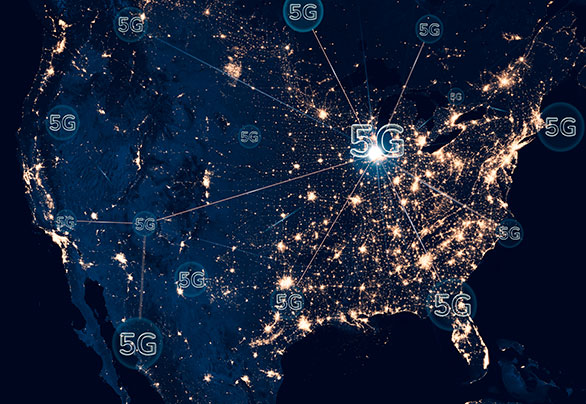


October 26, 2020
Eyes4Research
E-cigarettes also referred to as vapes, have surpassed traditional cigarettes as the most popular way to consume tobacco, with 1 in 20 Americans using vaping devices, according to Annal of Internal Medicine. In 2019, the e-cigarette market generated USD 15.9 billion and will continue to rise, reaching an estimated USD 39 billion in the next ten years, as forecasted by P&S Intelligence.
What are E-Cigarettes?
E-cigarettes come in many forms ranging from tanks and mods, disposable and rechargeable devices. Currently, there are three generations of e-cigarette devices. First-generation devices include a battery, coil, and liquid and are available to use straight from the package. They typically last for 200-300 puffs and cannot be refilled. Second generation devices have a rechargeable battery and tank that the user can fill with their e-juice of choice. These e-cigs allow for a more customizable experience, allowing users to adjust the nicotine concentration and vapor volume. For smokers looking for the most flexibility, third-generation devices give users the ability to customize almost every aspect of their device, from the wick material, coil type, and battery power. These devices require fewer refills and outlast other generations on a single charge.
Unlike traditional cigarettes that involve burning tobacco with a lighter, e-cigarettes are battery-powered, heating a nicotine-based liquid for the user to inhale. Though e-cigarette aerosols contain fewer chemicals than traditional cigarettes, the chemicals found in electronic cigarette juices remain harmful to users.
E-Cigarette Market Growth
The e-cigarette market has increased substantially over the past decade and will continue to grow, as Technavio predicts the Market to accelerate at a CAGR of 17% from 2020-2024, resulting in incremental growth of USD 29.53 bn. According to P&S Intelligence, drivers of the e-cigarette market are product innovation and technological advancements, the ease of availability, the appeal of electronic smoking devices as an alternative to tobacco smoking, and the social acceptance of e-cigarettes. A study by Gallup shows that 20% of 18-29-year-olds, 9% of 30 to 49-year-olds, and 7% of 50 to 64-year-olds smoke e-cigarettes occasionally to regularly.
E-cigarettes are often cheaper than traditional tobacco products, saving consumers who smoke a pack a day an estimated 92% per year on cigarettes, with e-cig users spending a minimum of $387 per year compared to a minimum yearly cost of $2087 for frequent cigarette smokers, according to Ruthless Vapor. The annual cost of e-cigarettes remains dependent on the type of electronic smoking devices, as well as the type of vape juice used with the e-cig.
E-Cigarette Risks
Though vaping is less harmful than smoking traditional cigarettes, electronic smoking devices still contain toxic chemicals that lead to long term health risks. Many consumers are misinformed, believing that e-cigarettes are safe, as they do not have the 7,000 chemicals of traditional cigarettes. However, e-juices are composed of carcinogens such as volatile organic compounds, heavy metals, nicotine, and diacetyl, increasing the risk of cancer, heart attack, and stroke infrequent e-cigarette users.
2. Highly Addictive
Many e-cigarette devices use nic-salts that allow consumers to inhale high levels of nicotine without the throat irritation of traditional cigarettes. With this, e-cigarettes are just as addictive as traditional cigarettes, resulting in user dependency through a blend of habit-forming chemicals and ease of aerosol delivery. Some cartridges may contain more nicotine than other tobacco products, as a study conducted by Truth Initiative and Center for Disease Control and Prevention shows a 106.7% increase in the average nicotine concentration of U.S. retailer e-cigarette products from 2013-2018. This rapid increase in nicotine concentration has raised concerns regarding long-term health effects and availability to youths.
3. Not an FDA Approved Cessation Tool
Though many e-cigarette devices market towards current smokers as a cessation tool, the FDA does not approve any vaping device as an aid to quit smoking due to a lack of scientific evidence. In a CDC study on quit methods used by U.S. adults, many tobacco users who turn to e-cigarettes as a way to stop smoking end up using both traditional tobacco products and vape devices. To prevent dual-use, many scientists recommend therapy and medication as the most effective methods to quit smoking.
4. Young Consumer Usage
Despite FDA regulations that prevent consumers under the age of 21 from purchasing e-cigarettes, these devices have grown in popularity amongst younger generations. The rise in e-cigarette use by middle schoolers and high schoolers derives from the belief that e-cigarettes are less harmful than traditional tobacco products, as well as the variety of flavors. E-cigarette use poses many health risks for young users, increasing the risk of cancer and stunting brain development, altering one’s impulse control, mood, attentiveness, and learning abilities. In addition to these health issues, e-cigarettes are a gateway drug, making it more likely for young nicotine consumers to try more dangerous substances.

October 20, 2020
Eyes4Research
When starting a research project, deciding between qualitative and quantitative approaches can be difficult. Here are some questions to consider to choose the best option for your overall research objectives.
How Complex is Your Concept?
Topic complexity plays a large role in finding the most suitable research approach. Quantitative research is best used for simple, measurable topics, as numerical data may not provide sufficient insights for abstract concepts such as emotion, thoughts, or attitudes. The use of operational definitions also limits interpretations of complex insights, reducing conclusions to numerical data.
Taking a qualitative approach helps develop an in-depth understanding of topics that are difficult to quantify. This method is best for concepts that are not widely understood and help researchers explore new ideas with more flexibility in their interpretations. Instead of reducing insights to a number, qualitative data provides researchers with detailed perspectives that can identify new patterns and understand intangible concepts.
How Many Participants Do You Need?
When choosing a research approach, one must consider the number of participants needed. For studies looking to generalize a large population, quantitative research may be the best option, as researchers can use the internet to send surveys to thousands of respondents quickly and efficiently. Quantitative research also simplifies data analysis, as researchers can use software to help organize and spot numerical trends, helping to confirm or dispute hypotheses.
For studies requiring a smaller number of respondents, one should use qualitative research. This approach allows researchers to gather in-depth insights about a topic through one-on-one interviews, focus groups, and observations. Seeing how this approach often requires researchers to coordinate with individual respondents, this method works best with small sample sizes. Considering their objectivity, the results of these studies also need a more hands-on analysis to obtain insights. With this, it remains the best practice to limit the number of respondents to save themselves time when interpreting qualitative results.
Are You Forming or Testing a Hypothesis?
When beginning a research project, one must consider the overall purpose of the initiative. For researchers looking to confirm or test a hypothesis or theory, quantitative data remains the ideal choice. This approach provides researchers with the subjective, numerical results they need to conclude correlational, descriptive, and experimental methods.
Qualitative research remains best for those looking to form a hypothesis, providing researchers with in-depth insights on concepts, experiences, and thoughts while helping explore and develop new ideas. Seeing that the results are objective, this method remains best suited for researchers looking to understand a topic rather than test or confirm it.
Do You Need to Replicate the Study?
Researchers must consider if their study is repeatable when deciding on their approach. Quantitative research allows for replication, as data collection standardized protocols make it easy to track numerical data over time. On the other hand, qualitative data is unreplicable, as insights are created through the researcher’s interpretation, invalidating the conclusions of other research professionals.
How Much Does the Setting Affect Your Research Initiative?
The overall results of a study may be influenced by its setting, making it crucial for researchers to pick the best possible approach for their overall research objectives. Quantitative research often disregards context, taking place in unnatural settings that may deter respondents from providing accurate information. On the other hand, qualitative research takes place in a naturalistic setting with a real-world context. Despite this, uncontrollable stimuli in the environment make it difficult to draw definite conclusions, leading to unreliable results.

October 19, 2020
Eyes4Research
5G, the fifth-generation mobile network, will become the new standard of wireless communication, transforming every facet of our lives. Through enhanced connectivity and speeds ten times faster than 4G LTE, 5G will drive technological innovations for consumers and businesses, fundamentally changing how the world connects and communicates.
How does it work?
Using new radio frequencies, 5G provides three different experiences; low, middle, and high. Low-band 5G has the longest wavelengths, allowing it to travel great distances, but at speeds only 20% faster than 4G. Mid-band 5G balances speed and coverage, using mid-length waves that travel great distances with significantly faster speeds than low-band. Finally, high-band 5G provides users with the fastest speeds but remains limited to small areas, as shorter waves cannot penetrate buildings.
Because 5G uses shorter wavelengths, carriers must build more cell towers to ensure a reliable and fast signal. With this, network providers have begun to slowly build out their 5G coverage city by city, putting in place the necessary infrastructure for the fastest speeds possible. Though 5G is available nationwide, few cities have high-band networks due to a lack of cell towers, leaving most locations with low-band or mid-band speeds. As carriers continue adding cell towers across the U.S., speed will improve, and more 5G compatible devices will become available on the market.
How is it different from 4G?
5G provides numerous benefits over 4G in terms of reliability, speed, and capacity. With the ability to take on more devices, 5G will eliminate connectivity issues in crowded locations. In addition, 5G’s higher frequency spectrum can carry large amounts of traffic and data, decreasing download times. 5G networks also reduce latency through a closer network of signals, preventing fallout and allowing for speeds up to 100 times faster than 4G. Finally, 5G consumes less energy than 4G, expanding the capabilities of battery-powered devices. Unlike the switch from 3G to 4G, 5G will work side-by-side with existing networks, falling back on LTE services when 5G is unavailable. Though 5G will require new compatible devices, 4G networks will only improve as 5G capabilities move into more areas.
What does 5G mean for the future?
5G has the potential to completely transform society, accelerating digital transformation in numerous industries while making it easier to connect with others. With low-latency and superfast speeds, 5G will drastically improve IoT capabilities, leading to innovations in household appliances, health devices, city infrastructure, and factory processes. 5G will also accelerate the growth of remote work and services by improving reliability and the speed at which people can connect. From telemedicine, virtual classrooms, remote work, and more, advancements in digital communication are just beginning. Finally, 5G may bring autonomous vehicles into the mainstream, allowing cars to collect performance, road, and security information to owners and dealerships. Though it will take years for 5G to become fully available, this new network is bound to pave the way for a brighter future.

October 14, 2020
Eyes4Research
The gig economy, also referred to as the freelance economy, provides an alternative to traditional employment, allowing skilled professionals to complete tasks or services through short-term contracts. With this, self-employed individuals can take on multiple clients or projects at once, contributing their skills to a variety of companies. With unemployment skyrocketing due to the recent pandemic, the gig economy has flourished. According to Upwork, ⅓ of the American workforce has turned to freelance amidst COVID-19, contributing $1.2 trillion to the U.S. economy. From Marketing, IT, ride-sharing, and more, the gig economy provides opportunities for people of virtually all professions and skillsets.
Benefits of Gig Economy:
The gig economy provides flexibility to both workers and businesses, eliminating geographic barriers while allowing employees to pick their projects and weekly hours. According to a study by Edelman Intelligence, flexibility is the main reason people freelance full-time, whereas extra income remains the key driver for part-time freelancers. For businesses, utilizing freelance and contract workers may reduce long-term costs, as these employees do not require an annual salary or benefits. Hiring temporary workers may also save money on training, as companies can hire for a specific skill, instead of a long-term employee who may have to learn on the job.
2. Worker Satisfaction
Gig workers tend to be more satisfied with their careers compared to full-time employees, as 79% of full-time independent workers claim to be happier working on their own than at a traditional job, as stated in a study by MBO Partners. Key drivers of this satisfaction include working on more meaningful projects, having flexibility, as well as being self-employed, according to BCG Henderson.
Freelancing Difficulties:
Unlike full-time positions where employees receive an annual salary, freelancer’s yearly incomes are inconsistent and unpredictable, as they remain dependent on the length of their contracts and the number of gigs they have. Once a project comes to a close, gig workers must search for other opportunities to make up for their pay cut. Due to this financial uncertainty, only 44% of gig workers rely on their work in the freelance economy as their primary source of income, according to Edison Research.
2. Fewer Protections and Benefits
A downside of the gig economy remains the lack of company benefits and employee protections. Without signing a full-time contract, companies have no obligation to provide contractors and freelancers benefits, leaving them with no safety net if they were suddenly unable to work. Due to this lack of protection, many workers who rely on gigs as their primary source of income end up purchasing their own insurance. However, these plans can be expensive, making them difficult to afford with an unsteady income.
The Future of Freelance
With a study by Mckinsey showing 1 in 6 traditional workers wanting to become a primary independent earner, the future of the gig economy looks promising. By the year 2028, 50.9% of the total U.S. workforce will be freelancers, as forecasted by Statista. As the freelance economy grows, more gig workers are advocating for laws to ensure benefits and protections to freelance and contract employees. Though there are many hurdles to overcome as the market grows, it looks as if the gig economy is here to stay.

October 12, 2020
Eyes4Research
Many Americans are canceling their cable, turning to streaming services, or DTV for their entertainment needs. Referred to as cord-cutters, these consumers make up 44.3 million US households as of 2020, according to NoCable. As the television industry evolves, so have consumer viewing preferences, as cost and customization become of utmost importance.
Benefits of Cord Cutting
From streaming services and devices, HDTV antennas, and smart televisions, there are several viewing options to fit the personal needs of consumers. With streaming service originals, live television shows, and customizable content plans, consumers can choose a viewing method that works within their price range, lifestyle, and content preferences. Many consumers subscribe to multiple streaming services, gaining access to thousands of shows on a plan that can be upgraded or canceled. Others may purchase a device or antenna, paying upfront for all the content they need.
2. Cheaper than Cable
With the average pay television service costing $103 per month, cord-cutting can save consumers up to $1236 a year, according to The Simple Dollar. From the one time payment of a streaming device or antenna to monthly subscription services, cutting the cord remains the most economical option for households looking to spend less on television. Though prices depend on the number of streaming service subscriptions and monthly internet plan, there are options for every price range and entertainment preference.
Limitations of Cord Cutting
With the popularity of streaming services skyrocketing in the last few years, prices have also increased as companies must pay a hefty cost to obtain licensed content from providers such as NBC, ViacomCBS, and Warner Brothers. Almost all streaming services, including Hulu, Netflix, and Youtube TV, have raised their prices over the past two years. Though monthly subscription prices may depend on the number of users and package size, streaming service price hikes show no signs of slowing down as competition continues to increase.
2. More Expensive Internet
Most pay-TV services offer bundles for television, internet, and home phone. By getting rid of cable, cord-cutters may have to pay more for the same speed internet, as they do not qualify for the bundle deals. Though these prices vary by provider, the cost of the internet, in addition to monthly subscription services, can be just as costly as keeping cable.
3. Reliabilility
Despite paying less per month, unreliable wifi or broadband connections may affect one’s viewing experience. Seeing that these alternative television services rely on external factors such as the internet or one’s proximity to broadcast towers, weak signals may cause buffering, poor image quality, or the inability to load content. Consumers must also consider the number of users they have, as using too many accounts at once may result in connectivity issues.
The Pandemic’s Affect on TV
With the pandemic causing growing financial strain on millions of consumers around the United States, over 6 million households have cut out pay-TV in 2020, as reported by TechCrunch. These numbers may rise over the next four years, as eMarketer forecasts the number of non-pay TV households to increase to 68.2 million by 2024. In addition to decreased consumer spending, television production companies have suffered due to the pandemic, postponing shows, and movies due to safety concerns. As companies and consumers adapt to the new normal, the future of at-home entertainment remains uncertain. Despite this, cord-cutting has the potential to accelerate the evolution of television, creating a more personalized and cost-effective way to consume media.

October 7, 2020
Eyes4Research
The pandemic has transformed the way patients receive healthcare services, as systems adopt telemedicine to minimize exposure between doctors and the ill. Telemedicine refers to the use of technology to provide patients with healthcare services through both synchronous and asynchronous communication. With this, telemedicine allows people to receive adequate health care from the comfort of their home, saving both providers and patients time and money.
Telemedicine connects people all over the country to health providers. From rural populations, people without transportation, elderly patients, and even the incarcerated, virtual visits defy limitations, providing patients access to healthcare wherever they may be. For many, telemedicine remains the only reason they receive care, as a UPMC patient survey shows that 40% of patients would skip treatment without the option for a virtual visit due to the burden of travel.
2. Lower Costs
Telehealth helps patients save money on external costs associated with visiting the doctor’s office, including transportation and parking, childcare, and taking time off of work. According to doxy.me, telemedicine care saved patients 19% more than inpatient care.
3. Improved Engagement and Satisfaction
Telemedicine simplifies appointments for both patients and health care providers, as it gives people access to healthcare from the comfort and privacy of their homes, reducing the rate of no-show appointments. Virtual visits also eliminate waiting times and possible exposure to illnesses, creating a safer and more efficient way to receive care.
As more patients turn to virtual visits, data privacy has become a growing concern. Hackers may obtain confidential patient information through unsecured networks or unencrypted channels. Despite the numerous policies and procedures in place to keep personal health records confidential, health providers must take extra precautions when providing remote health services such as employee security training, remote access protocol, and rigid security controls.
2. Delays in Care
In situations where patients require urgent medical attention, telemedicine may delay treatment. Without the ability to conduct physical examinations or run tests, medical practitioners are unable to provide timely life-saving treatment to those experiencing a medical emergency.
3. Care Quality
With the inability to conduct a physical examination, medical practitioners must rely on the patient’s medical history and self-reporting. These limitations may leave room for oversights, as any misinterpretation or lack of information provided by the patient may result in a misdiagnosis or untreated condition. Poor internet connection may also affect care quality, as technological issues deter clear and timely communication.
4. Insurance
Though all states have some form of Medicaid reimbursement for telehealth services, the extent of these reimbursements varies from state to state, making it difficult for patients to know what is covered by insurance. Seeing how these laws are constantly changing, many patients avoid telemedicine altogether, receiving care in-person from healthcare providers they know are covered by their insurance.